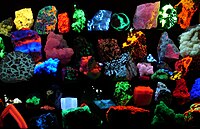
A novel study for fluorescence patterns of the parathyroid glands during surgery using a fluorescence spectroscopy system
Sign Up to like & getrecommendations! Published in 2020 at "European Archives of Oto-Rhino-Laryngology"
DOI: 10.1007/s00405-020-05849-4
Abstract: Purpose Recently it was reported that the parathyroid glands (PGs) emit autofluorescence when exposed to near infrared light, and a technique using fluorescence to detect the PGs intraoperatively was found to be useful. In some… read more here.
Keywords: parathyroid glands; fluorescence; fluorescence spectroscopy; pgs ... See more keywords

In situ determination of secretory kinase Fam20C from living cells using fluorescence correlation spectroscopy.
Sign Up to like & getrecommendations! Published in 2021 at "Talanta"
DOI: 10.1016/j.talanta.2021.122473
Abstract: Secretory proteins constitute a biologically crucial subset of proteins for regulation of some pathological and physiological processes, and they have become very important biomarkers in clinical diagnosis and therapeutic targets. So far, secretory protein functions… read more here.
Keywords: secretory; fam20c; using fluorescence; spectroscopy ... See more keywords

Quinolinium-Based Fluorescent Probes for Dynamic pH Monitoring in Aqueous Media at High pH Using Fluorescence Lifetime Imaging
Sign Up to like & getrecommendations! Published in 2023 at "ACS Sensors"
DOI: 10.1021/acssensors.3c00316
Abstract: Spatiotemporal pH imaging using fluorescence lifetime imaging microscopy (FLIM) is an excellent technique for investigating dynamic (electro)chemical processes. However, probes that are responsive at high pH values are not available. Here, we describe the development… read more here.
Keywords: quinolinium; fluorescence lifetime; lifetime imaging; using fluorescence ... See more keywords

Monitoring intracellular nanomolar calcium using fluorescence lifetime imaging.
Sign Up to like & getrecommendations! Published in 2018 at "Nature protocols"
DOI: 10.1038/nprot.2017.154
Abstract: Nanomolar-range fluctuations of intracellular [Ca2+] are critical for brain cell function but remain difficult to measure. We have advanced a microscopy technique to monitor intracellular [Ca2+] in individual cells in acute brain slices (also applicable… read more here.
Keywords: lifetime imaging; fluorescence lifetime; cell; using fluorescence ... See more keywords

Mapping the time dependent DNA fragmentation caused by doxorubicin loaded on PEGylated carbogenic nanodots using fluorescence lifetime imaging and superresolution microscopy.
Sign Up to like & getrecommendations! Published in 2022 at "Biomaterials science"
DOI: 10.1039/d2bm00641c
Abstract: Doxorubicin is an anthracycline drug most commonly used in cancer therapy. It intercalates with the nuclear DNA and induces toxicity by causing DNA breaks and histone eviction. However, the kinetics of its action on the… read more here.
Keywords: time; dna; microscopy; fluorescence lifetime ... See more keywords

Depth-resolved imaging of photosensitizer in the rodent brain using fluorescence laminar optical tomography
Sign Up to like & getrecommendations! Published in 2020 at "Journal of Biomedical Optics"
DOI: 10.1117/1.jbo.25.9.096007
Abstract: Abstract. Significance: Previous studies have been performed to image photosensitizers in certain organs and tumors using fluorescence laminar optical tomography. Currently, no work has yet been published to quantitatively compare the signal compensation of fluorescence… read more here.
Keywords: fluorescence laminar; laminar optical; optical tomography; using fluorescence ... See more keywords

Characterization of Extracellular Vesicles Labelled with a Lipophilic Dye Using Fluorescence Nanoparticle Tracking Analysis
Sign Up to like & getrecommendations! Published in 2021 at "Membranes"
DOI: 10.3390/membranes11100779
Abstract: Research on extracellular vesicles (EVs) has intensified over the past decade, including fluorescent membrane labeling of EVs. An optimal fluorescent method requires the size of EVs to be preserved after labeling. Lipophilic fluorescent dyes, such… read more here.
Keywords: extracellular vesicles; cmg; size; using fluorescence ... See more keywords